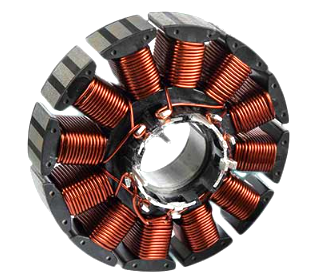What are the common sensor failures and their solutions for brushless motor motor automatic stator-in-case machine?
Brushless motor motor automatic stator into the machine shell machine common sensor failure and its solution are as follows:
First, the position sensor failure
1、Inaccurate signal
Failure causes: the sensor probe is dirty, dust, affecting the accurate transmission of signals and sensing; sensor installation position offset, resulting in the detection of the position information does not match the actual; the sensor itself is aging, damage, internal component performance decline.
Solution: Clean the sensor probe regularly to ensure that there is no debris blocking; use professional tools to recalibrate the sensor's mounting position and fix it firmly; replace the aging or damaged sensor.
2、Signal loss
Failure causes: the sensor's connection line is loose, broken or short-circuit, resulting in the signal can not be transmitted properly; sensor power supply system failure, such as power supply voltage is too low, unstable or power module damage.
Solution: Check the sensor's connection line to ensure a firm connection, repair or replace the damaged line; check the power supply system, measure the power supply voltage is within the specified range, repair or replace the faulty power supply module.

Second, the pressure sensor failure
1, inaccurate pressure measurement
Failure causes: damage to the sensor's pressure measuring element, such as diaphragm rupture, deformation, etc., resulting in measurement deviation; zero drift of the pressure sensor, not regularly calibrated.
Solution: Replace the damaged pressure measuring element or the entire pressure sensor; calibrate the pressure sensor according to the specified calibration cycle, adjust the zero point and range.
2、Pressure abnormal alarm false trigger
Failure causes: the sensor's threshold is set unreasonably, too sensitive or mismatched with the actual working pressure range; the sensor is subject to external interference, such as electromagnetic interference, vibration, etc., resulting in signal anomalies.
Solution: According to the actual process requirements, re-adjust the alarm threshold of the pressure sensor; the pressure sensor to take shielding, vibration and other anti-interference measures, such as the use of shielded wires, the installation of vibration pads and so on.
Third, photoelectric sensor failure
1, detection distance change
Failure causes: the sensor's transmitting power decreased, may be aging, damaged light source; receiving end of the photosensitive element sensitivity is reduced, by dust, oil and other pollution.
Solution: replace the aging or damaged light source; clean the photosensitive element, such as the inability to restore the sensitivity of the replacement; adjust the detection distance and installation angle of the sensor to ensure that the effective range of normal operation.
2、Misdetection
Failure causes: the surrounding environment is too light or the presence of reflective material, interfering with the normal detection of photoelectric sensors; sensor response time is not set properly, for the detection of fast-moving objects inaccurate.
Solution: add a light shield for the photoelectric sensor to avoid interference with external light, clear the reflections around; according to the speed of the object's movement, reasonable adjustment of the sensor's response time.
Fourth, the temperature sensor failure
1, temperature measurement deviation
Failure causes: the sensor's temperature sensing element is damaged, such as thermocouple breaks, RTD short circuit, etc.; sensor and the measured object contact is poor, there is an air gap or thermal conductivity media aging.
Solution: Replace the damaged temperature sensing element; ensure that the sensor and the object being measured in close contact, replace the aging of the heat conduction medium, such as thermal grease.
2、Temperature alarm abnormal
Failure causes: the temperature alarm threshold is set unreasonably, and the actual operating temperature range of the device does not match; sensor signal transmission lines are interfered with, resulting in abnormal temperature data.
Solution: According to the normal operating temperature range of the equipment and protection requirements, reset the temperature alarm threshold; shielding and grounding of the signal transmission line to reduce interference.
※ If the above ways and means still can not solve the equipment failure, please contact Xinhui Electromechanical Equipment Co., Ltd. technical specialists through the page chat tool to seek help.







